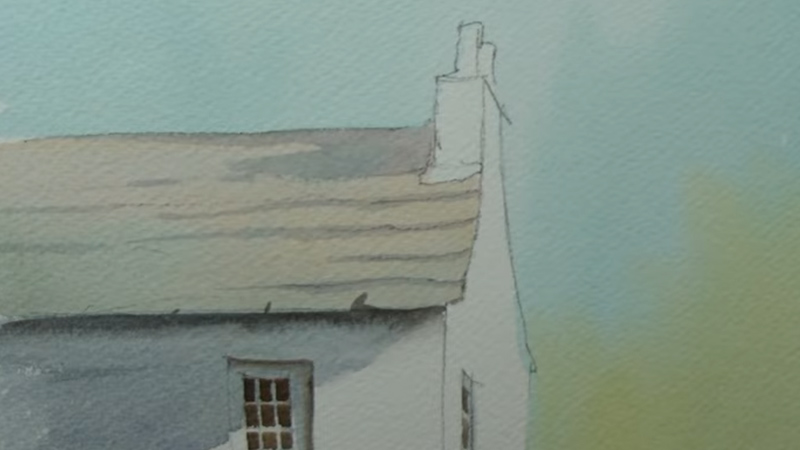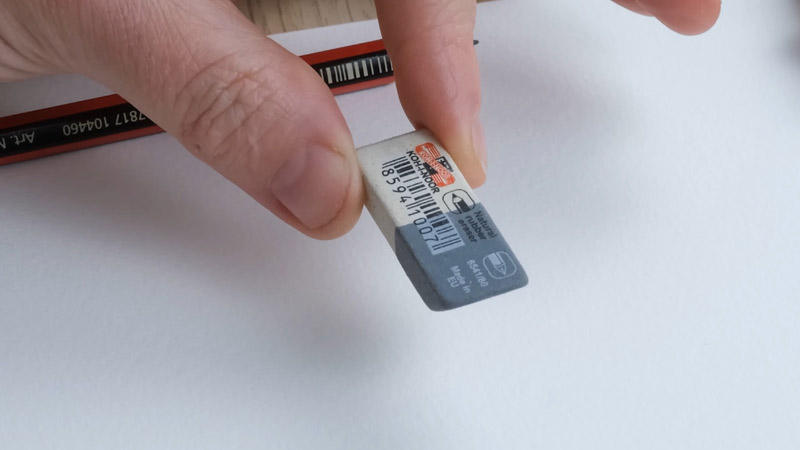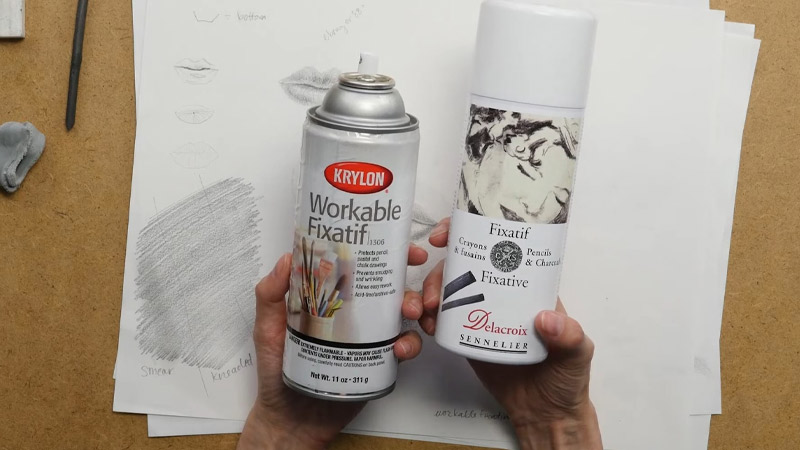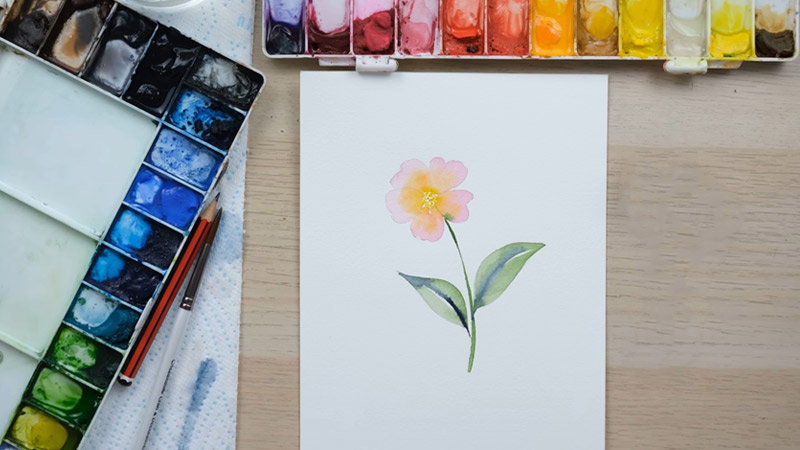Navigating the delicate balance between pencil sketches and watercolor painting is an intriguing aspect of artistic expression.
The question of whether one can erase pencil marks under watercolor involves a nuanced exploration of techniques and considerations.
Pencil lines, typically visible through the translucent nature of watercolors, pose challenges in achieving a seamless integration.
Artists grapple with choices in paper, erasers, and methods to effectively conceal or incorporate pencil sketches.
This delicate dance between pencil and watercolor requires a keen understanding of materials, timing, and the desired visual outcome.
In this creative realm, the ability to erase pencil under watercolor becomes a technical skill and a nuanced art form.

Can You Erase the Pencil Under Watercolor? Erasing Pencil Under Watercolor
Yes, you can erase pencil marks under watercolor. Drawing very lightly and using a kneaded eraser to lift the lines is recommended, leaving them much firmer.
It’s important to erase any unwanted pencil marks before painting, as once the paint has dried over the pencil, it’s too late to erase them.
Additionally, there are erasable colored pencils available, such as the Pilot Color Eno and Prismacolor Colerase, which can be used for underdrawings and erased if needed.
However, if you wish to erase pencil marks underneath watercolor, here are some considerations to keep in mind:
Quality of Paper
The choice of paper significantly influences the success of erasing pencil marks under watercolor.
Watercolor paper is specifically designed to handle the moisture of watercolors without warping or deteriorating. It comes in various weights, with heavier weights providing more durability.
Using a heavyweight watercolor paper, such as 140lb or more, will offer better resistance to eraser damage and help maintain the integrity of the paper surface.
Light Pencil Marks
When sketching underneath watercolor, using a light touch with your pencil is advisable. Harder pencils in the H range (e.g., 2H or 4H) create lighter marks than softer ones in the B range.
Light pencil lines are less likely to show through the watercolor wash, allowing for a more subtle integration of the sketch into the painting.
Erasers

Choosing the right eraser is crucial for successful pencil mark removal. Kneaded erasers or gum erasers are often preferred for delicate work as they lift graphite without leaving residue.
These erasers are softer and less abrasive, reducing the risk of damaging the paper surface. Keeping your eraser clean by kneading or wiping it periodically prevents any transferred graphite from smudging the watercolor.
Timing
The timing of erasing is critical. Ensure that the watercolor layers are completely dry before erasing pencil lines.
When exposed to erasers, wet or damp paper is more susceptible to tearing and damage. Waiting for the watercolor to dry also prevents the possibility of smudging, ensuring that the erasing process is precise and controlled.
Technique
Employing a gentle erasing technique is essential to prevent damage to the paper and the watercolor layers.
Instead of aggressive rubbing, use a dabbing or patting motion. This helps lift the graphite without disturbing the texture of the paper or compromising the watercolor.
If erasing larger areas, work in small sections, allowing each section to dry before moving on to the next, minimizing the risk of paper damage.
Fixative Spray

Consider using a fixative spray to further safeguard against smudging or unintentional disturbance of the watercolor layers.
This spray creates a protective barrier over the pencil lines, helping set them in place before applying watercolor.
By securing the pencil marks, the fixative makes it easier to erase without affecting the painted layers, offering additional control in the process.
Testing on Scrap Paper
Before attempting to erase pencil marks on your main artwork, conduct a test on a scrap piece of the same watercolor paper.
This allows you to evaluate the effectiveness of your chosen eraser and technique without risking damage to your primary piece.
Additionally, it allows you to adjust your approach based on the specific characteristics of the paper you’re working with, ensuring a smoother and more successful erasing process on the final artwork.
How Do You Hide Pencil Marks Under Watercolor?

Hiding pencil marks under watercolor requires a thoughtful approach to ensure seamless integration of the sketch with the painted layers.
Here’s a step-by-step guide on how to effectively conceal pencil marks under watercolor:
Light Sketching
The importance of beginning with a light sketch cannot be overstated. Using a harder pencil, such as a 2H or 4H, ensures that the pencil marks are faint and less likely to be visible through the watercolor layers.
This initial light sketch guides your composition without leaving pronounced marks that may interfere with the final artwork.
Quality Watercolor Paper
Investing in high-quality watercolor paper is crucial for hiding pencil marks. Heavyweight papers, typically around 140lb or higher, provide the necessary thickness and durability to withstand the application of watercolor without warping.
Additionally, the paper’s surface texture can influence how pencil lines interact with the watercolor.
Papers with more teeth tend to disperse pencil marks, aiding in their integration with the painted layers.
Use Colored Pencils
Opting for colored pencils in neutral or light colors can be a strategic choice. These pencils can be chosen to match the overall color scheme of the watercolor painting, making them less conspicuous.
Colored pencils also inherently blend well with watercolor, seamlessly transitioning between the sketched lines and the painted areas.
Erasable Colored Pencils
Erasable colored pencils offer artists the flexibility to make adjustments even after applying watercolor.
This can be particularly beneficial when a pencil mark becomes noticeable, allowing for easy correction without damaging the underlying paper.
Artists can use the eraser on these colored pencils to lighten or remove specific sketch sections.
Selective Erasing
Before applying watercolor, take the time to assess the pencil sketch critically. A gentle eraser, such as a kneaded eraser, can be employed for selective erasing.
This method involves lightening or removing only the lines that may interfere with the watercolor painting, preserving essential elements of the sketch.
Layering Watercolor
Employing a layering technique with watercolor is an effective way to conceal pencil marks gradually. Start with a light wash and build up layers progressively.
The initial sketch will remain faintly visible beneath the layers, allowing for a subtle integration that avoids stark contrasts between the sketch and the watercolor.
Blend and Feather Pencil Marks
Blending tools, like blending stumps or even a gentle finger smudge, can be used to soften pencil lines.
Feathering the edges of the lines creates a seamless transition between the sketch and the watercolor wash.
This technique is particularly useful when aiming for a more organic and cohesive appearance in the final artwork.
Transparent Watercolor Techniques
Experimenting with transparent watercolor techniques allows artists to incorporate pencil lines into the composition intentionally.
Wet-on-wet and glazing techniques take advantage of the inherent transparency of watercolors, enabling the pencil lines to become an integral part of the overall visual narrative.
Finishing Details with Pencils
After completing the watercolor layers, artists can consider enhancing certain details or refining the sketch with colored pencils or watercolor pencils.
This step allows for unifying the sketch with the painted layers and addressing any remaining visible pencil marks. Adding subtle details with pencils can produce a cohesive and polished final result.
FAQs
Can You Erase Pencil After Watercolor?
Erasing pencil after watercolor is challenging due to potential paper damage and smudging. Using light pencil strokes initially and selecting erasable pencils for greater flexibility is advisable.
Can You Erase Pencil Marks Under Watercolor?
While challenging, erasing or minimizing pencil marks under watercolor is feasible.
Using quality paper, a light sketch, and careful erasing techniques can help integrate the pencil lines seamlessly.
Can You Rub Out Pencil After Watercolor?
Rubbing out a pencil after watercolor is not recommended as it can damage the paper and disturb the painted layers. Selective erasing with gentle techniques is a more effective approach.
To Recap
In the realm of artistic expression, the question of whether one can erase pencil under watercolor transcends technical considerations to embody the essence of creative exploration.
As we conclude this exploration, it becomes evident that the interplay between pencil sketches and watercolor demands a delicate touch and strategic approach.
While erasing pencil marks under watercolor is feasible with careful techniques and quality materials, embracing the inherent transparency can lead to captivating results.
This process’s fusion of precision and spontaneity encapsulates the essence of artistic ingenuity.
Ultimately, the ability to erase pencil under watercolor becomes a dynamic facet of an artist’s toolkit, offering a canvas for innovation and evoking the beauty of harmonizing diverse mediums.
Leave a Reply